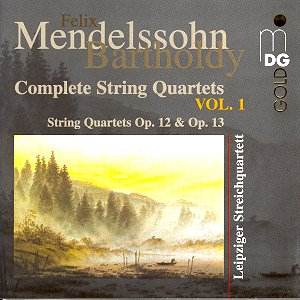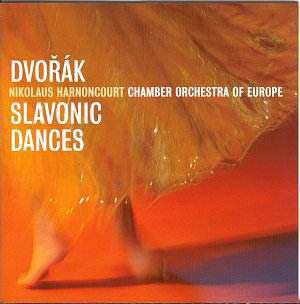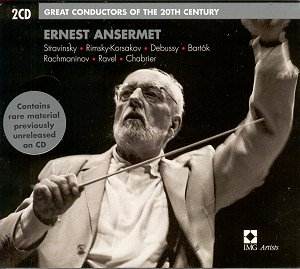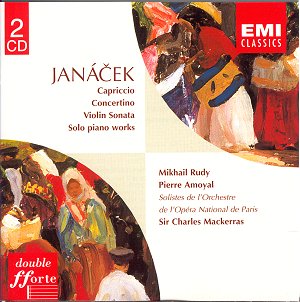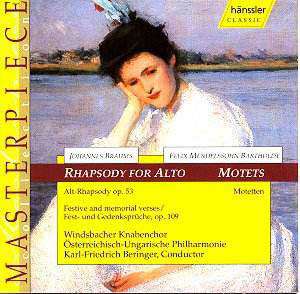 Composer: Johannes Brahms
Composer: Johannes Brahms
Works: Alto Rhapsody, Opus 53; Festive and Memorial Verses, Opus 109; Felix Mendelssohn: Three Motets: Jauchzet dem Herrn, Richte mich Gott (Psalm 43), Denn er hat seinen Engeln befohlen
Performers: Pamela Coburn (soprano), Lioba Brawn (mezzo soprano), Deon van der Welt (tenor), Windsbacker Knabenchor, Austro-Hungarian Philharmonic Orchestra, Friedemann Winklhofer (organ)
Recording: 20-14 July 1996, Kirche St Gumbertus
Label: Hänssler Classic CD94.008
The works of Johannes Brahms and Felix Mendelssohn resonate with the rich traditions of German choral music, each composer embodying distinct yet complementary stylistic elements. Brahms, with his deep-rooted connection to the choral traditions of Hamburg and Vienna, often infused his works with profound emotional weight and technical complexity. The “Alto Rhapsody,” a staple of the choral repertoire, captures Brahms’s mature style, marked by lush harmonies and a poignant lyrical line. Conversely, Mendelssohn’s motets, while less frequently performed, reveal his mastery of counterpoint and textural clarity, showcasing the lighter, yet equally compelling, dimensions of the choral form.
The performances captured in this reissued CD present a compelling interpretation of Brahms’s “Alto Rhapsody.” Lioba Brawn’s rich mezzo-soprano voice delivers the poignant themes with a warmth and depth that is particularly effective in the work’s climactic moments. Beringer’s conducting is notable for its atmospheric pacing; he allows the music to breathe, creating a vivid emotional landscape. However, the recording’s close miking sometimes renders the orchestral textures overwhelming, particularly in the more delicate passages, potentially obscuring the interplay of voices and instruments. The ensemble’s coherence is commendable, yet the dynamic balance could benefit from a more nuanced sound engineering approach to enhance clarity.
The “Festive and Memorial Verses,” Brahms’s homage to his Hamburg roots, is performed here with a sense of gravitas that befits its occasion. The unaccompanied voices of the ensemble exhibit a commendable blend, capturing both the solemnity and celebratory aspects of the work. The performers engage with Brahms’s textural subtleties, executing the intricate harmonies with precision. However, the lack of accompanying text and translations in the CD booklet detracts from the listener’s full appreciation of Brahms’s nuanced musical language, making it a missed opportunity for deeper engagement with the material.
Turning to Mendelssohn’s motets, these works are beautifully executed by the Windsbacker Knabenchor, whose youthful vigor and clarity of tone bring an effervescent quality to the performances. The motets, especially “Jauchzet dem Herrn,” benefit from the choir’s agile phrasing and sensitive dynamic contrasts. Each motet’s intricate counterpoint is articulated with a precision that reflects Mendelssohn’s deep understanding of choral writing. The recording quality is commendable, with a pleasing ambience that complements the vocal textures. Yet, in comparison with other notable recordings, particularly those featuring larger and more established choirs, this ensemble occasionally lacks the depth and richness that might elevate the interpretation further.
The overall presentation of this disc, despite its shortcomings in terms of length and accessible textual materials, showcases the formidable talents of its performers and the enduring beauty of Brahms and Mendelssohn’s choral works. The performances are thoughtful and well-prepared, and while there is room for improvement in sound engineering and contextual accessibility, the musical interpretations offer a rewarding listening experience. This recording serves as a valuable testament to the timeless appeal of both composers, inviting listeners to explore the intricate emotional landscapes they so masterfully crafted.
